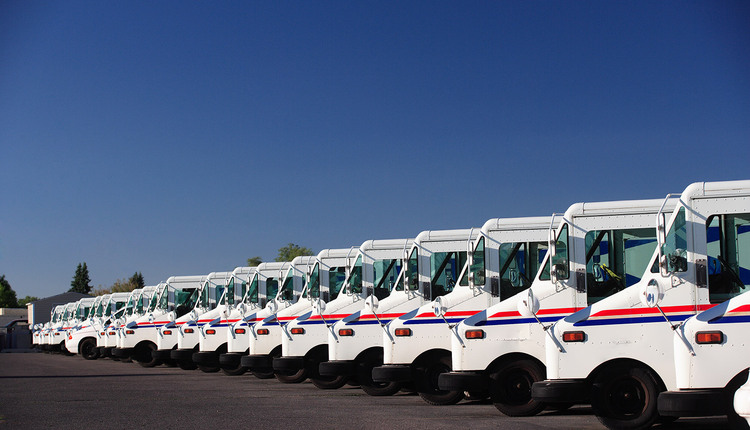At the time this article was written, the USPS and mailing industry were preparing for the upcoming National Postal Forum (NPF) in May (which is where you may be first reading this article!). Mailers and shippers were excited to see two USPS executive-led sessions on the NPF schedule focused on the USPS’ network redesign plan – a topic of critical importance not just to the USPS, but to businesses in the mailing and shipping supply chain who depend on efficient, cost-effective, and predictable USPS processing and delivery. The USPS at last year’s NPF first shared its overall network redesign concept, and the industry is looking forward to learning more.
It is important to remember that network redesign is a huge undertaking for USPS that will take years to fully implement nationwide, affecting the majority of its facilities and many of its employees in one way or another. The implementation will be regional and iterative to start, with the USPS (and industry) gaining information on the changes and analyzing what works well and what doesn’t so that changes can be made prior to another regional implementation. Some things may change after the first regional implementation. In addition, many constituencies will be impacted – the mailing and shipping industry, USPS employees, consumers, and more. When it comes to its employees, there are labor unions and contract rules the USPS must deal with, which include timelines and processes for facility changes that impact employees.
The Network Redesign Concept. The high-level concept the USPS has shared on its network redesign plan is that it will consist of 60-65 Regional Processing & Distribution Centers (RPDCs – but don’t get too attached to acronyms as they could still change…) located around the country. These “mega” facilities would process all types of mail and parcels, unlike today where USPS has some facilities that only handle one type of mail (e.g., flats or letters) or parcels vs mail. The USPS would eliminate the existing Network Distribution Centers (NDCs) but utilize those facilities in new ways, some with facility modernization or improvements.
The next level of facility in the network redesign plan are the Local Processing Center (LPCs) with the number and locations similar to the existing SCF (Sectional Center Facility) network. It is possible that these facilities would only perform destinating processing, unlike today’s SCFs, which do both originating and destinating processing.
Lastly, while the existing DDU (Destination Delivery Unit) carrier/retail locations will not change in many places, in some cases multiple DUs will be combined into a central Sortation & Delivery Center (S&DC). These could be standalone facilities but in many cases could be co-located with an RPDC or with an LPC. And an LPC could be co-located with an RPDC. So in some locations one large facility could act as all three (RP&DC, LPC, S&DC).
Regional Processing & Distribution Centers (RP&DCs). One of the biggest differences between today’s network and the RP&DC concept is that, today, parcels often travel a different processing and transportation path than letters and flats. In the network redesign, all shapes and classes of mail would be processed and transported together, increasing density and filling trucks, which will drive efficiency and reduce costs. The RP&DC facilities may be large existing facilities (SCFs, NDCs, etc.) that get converted to an RP&DC, or they may be new/leased facility space. Areas that have been discussed as being in the early implementation plans include Atlanta, Indianapolis, Charlotte, Richmond, Chicago, and Houston.
Local Processing Centers (LPCs). The Local Processing Center (LPC) network is likely to largely mirror the existing SCF network in terms of LPC locations, with around 220 LPCs. If these facilities do not perform originating processing like today’s SCFs, that would be the most significant difference. In addition, an existing SCF facility could become an LPC, or if it is large enough and in the right location, it could become an RP&DC or it could be both co-located in one facility.
Sorting & Delivery Centers (S&DCs). The USPS has already started implementation of Sortation & Delivery Centers (S&DCs), which combine carrier operations for multiple Delivery Units. As noted above, S&DCs could be standalone facilities, or co-located at an LPC or at an RP&DC. The USPS is aggressively pursuing the S&DC implementation plan and moving quicker on these facility changes because they are integral to supporting the USPS’s electric vehicle (EV) charging infrastructure and vehicle deployment. The USPS will begin accepting new EVs at a potential rate of 2,000 per month, and will need to have the charging infrastructure in place to support deployment of the new vehicles.
The USPS is learning as it goes with the S&DC implementation and told mailers in March that there were many lessons learned and changes to the implementation plans after the first S&DCs were put in place. As the USPS learns and finetunes its implementation process, it is likely that it will be able to move much more quickly in the future, so the rate of S&DC implementation is likely to increase. The Postmaster General told mailers in March that the USPS hopes to implement 100 S&DCs over the next 18 months. Since the USPS received funds from Congress to support building out the EV infrastructure, it is able to make the necessary capital investments.
The Timeline Is Dynamic. The USPS has not yet implemented the first RP&DC facility, and has said that when it does, it would also implement the LPC network to support that RP&DC as well as any S&DC conversions in that service area. Although the first RP&DC is rumored to be in Richmond, VA, with an implementation timeframe of late summer 2023, that could get pushed back. And some USPS officials said it could take a full six months after initial implementation of an RP&DC before all adjustments that may need to be made occur.
The Postmaster General in March told mailers that he hopes to implement 42 sites over the next year – 12 RP&DCs in 12 regions and 30 LPCs in those regions. It may seem to be an ambitious goal given that the first RP&DC is not yet up and running… but as noted above, once the USPS gets more experience with the implementation and adjusts its plans and processes, they are likely to go quicker.
Simple? Some have heard Postmaster General Louis DeJoy describe the plan as “simple,” and on the surface and at a high level, it is fairly simple: a hub and spoke design similar to what many others use who have a national network of distribution facilities. There are significant differences, however, between the Postal Service and other national distribution companies… and one of the key ones is the role that third party mailers and shippers play – a role that has a significant positive impact on the USPS’s costs, efficiency, and service performance.
Walmart, for example, doesn’t have the manufacturers of the toys it sells doing most of the container preparation and transportation to bring the toys to the Walmart store where they will be sold. But for 90+% of the USPS’s Marketing Mail and Periodicals volume and a significant percentage of its parcels volume, third-party providers sort, barcode, consolidate, containerize, and transport the product closer to its destination, reducing the number of “touches” the USPS must perform. The USPS provides price discounts for work performed by third-party providers because it reduces the USPS’s costs.
In addition, mailers and shippers go to great lengths to achieve consistent, predictable delivery of their products to the recipients, through work such as presorting, barcoding, containerization, and drop shipping product in the most optimal ways for USPS. Some service providers will choose their facility locations based on ability to achieve the desired USPS service level for their customers. All invest in equipment, space, labor, and more based on the work they perform to process and transport the products prior to USPS entry.
For the Industry, the Details Are Important. For third-party mailing and shipping service providers, many of the details of the network redesign are critically important for their business and may impact their costs and/or service offerings to customers, so the sooner they know those details, the sooner they can begin the necessary business planning. Many of these service providers want to collaborate with the Postal Service to make the network redesign a win-win for all. Third-party providers stand ready to work with the USPS to pilot test changes in preparation, containerization, entry, and more to help develop the optimal design.
Even though the network redesign may be simple at a high level, the details are what may drive significant changes for third-party mailing and shipping providers. Here are just a few of the questions I’ve heard from third-party service providers:
Will mailers that today drop ship some part of their volume into the Network Distribution Centers (21 facilities), in the future have to drop that volume into the RP&DC network (60-65 facilities)? If so, the volume will be spread out over more drop locations, reducing density to individual facilities. Decisions likely will need to be made by providers in terms of which RP&DCs to drop volume into based on the transportation cost, potential service performance impacts, and customer demands.
For mailers of flats, it is not yet clear what the optimal flats entry and preparation will be for the USPS in the redesigned network, which will eventually have an impact on flats prices, discounts, and costs. In addition to the network changes, the USPS also is eliminating Flats Sequencing System (FSS) equipment, preparation, and discounts. Depending on how and where the USPS plans to process flats in the new network, It is possible that additional changes to the sortation structure and discounts for flats could come.
Will the network redesign impact where Business Mail Entry Units (BMEUs) are located, or how Detached Mail Units (DMUs) work? Will First-Class mailers that today separately containerize destinations at their own cost as directed by the USPS through Customer/Supplier Agreements (CSAs) be asked to make additional separations to accommodate the network redesign and 60-65 RP&DCs? What role will the existing Surface Transfer Centers (STCs) play in the redesigned network? How much lead time will mailers & shippers have to make changes ahead of a region’s network redesign implementation?
At which facility types will shippers be able to enter parcels of different types? For those able to qualify parcels or mail for destination-entered Delivery Unit discounts, the combining of multiple DDUs into a central SDC could increase that opportunity – and make it available to those with insufficient density/volume to take advantage of it today. There may be other potential opportunities for third-party service providers depending on how USPS may change sortation, containerization or entry incentives.
The Mailing & Shipping Industry Stands Ready. Having been through significant USPS network changes before, the mailing & shipping industry is all too aware of the positive – or negative – impacts such changes can have on their business and on their customers. But we want the USPS to succeed, and we are working hard to engage with the USPS as much as possible as it works through the network changes. As third-party service providers that represent the backbone of the mailing and shipping industry, we are an integral part of a complex supply chain that depends on the USPS. We stand ready to support the USPS’ network redesign efforts.
Kathleen J. Siviter is Asst. Executive Director of the National Association of Presort Mailers (NAPM) as well President of Postal Consulting Services Inc. (PCSi), and she has over 30 years’ experience in the postal industry. She has worked for the U.S. Postal Service, Association for Postal Commerce (PostCom), and others, as well as providing consulting services to a diverse set of clients with interest in the postal industry. She has also worked with PostalVision 2020, an initiative designed to engage stakeholders in discussions about the future of the American postal system.
This article originally appeared in the May/June, 2023 issue of Mailing Systems Technology.








![GettyImages-614732668-[Converted]](https://cms-static.wehaacdn.com/mailingsystemstechnology-com/images/GettyImages-614732668--Converted-.1670.widea.0.jpg)






